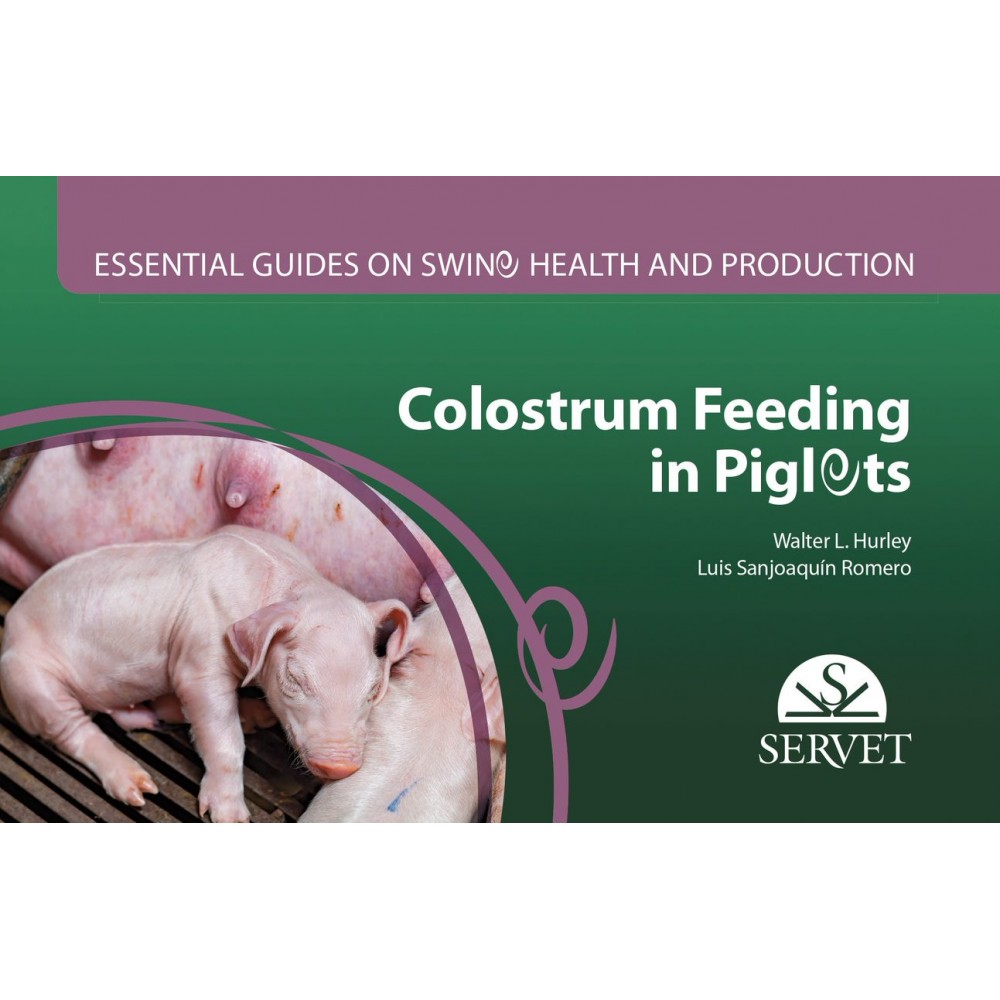



Because the prolificacy of sows can now be very high, piglets require special attention to ensure their survival. This book describes the importance of colostrum and its immediate ingestión after farrowing. The energy, immunity,and growth factors contained within make colostrum feeding essential for the optimal development of newborn piglets.
Because the prolificacy of sows can now be very high, piglets require special attention to ensure their survival. This book describes the importance of colostrum and its immediate ingestión after farrowing. The energy, immunity,and growth factors contained within make colostrum feeding essential for the optimal development of newborn piglets.
Authors:
Luis Sanjoaquín Romero
Luis Sanjoaquín Romero obtained his degree in veterinary science from the University of Zaragoza, Spain, in 1999. His professional career has been fully focused on the pig industry, of which he has acquired a wealth of knowledge from several different perspectives. He began working for 2 years on a farm of 3,000 sows, where he acquired valuable experience about the realities of the swine industry. Subsequently, he spent several years working as a consultant and collaborating with the Agrupación de Defensa Sanitaria (Animal Health Protection Group) of the Sobarbe region in Spain.
In 2014 together with Antonio Vela he cofounded the swine industry consultancy ThinkinPig, which currently employs 6 people. ThinkinPig offers its services worldwide, providing each client with personalized advice to address their specific day-to-day needs, and also focuses on the development of new tools to facilitate further advances in the swine industry. Another speciality of the ThinkinPig team is the development of on-farm tests.
Luis Sanjoaquín Romero has participated in many conferences both as a listener (IPVS, ESPHM, AASV, etc.) and a speaker, giving talks worldwide, including Poland, Denmark, Austria, the United Kingdom, Brazil, Colombia, and Cambodia. He has published technical articles in specialist publications (e.g. Suis, Albéitar, 3tres3) and is the author of the book Manejo de la cerda hiperprolífica (Management of the hyperprolific sow) (Editorial Servet, 2014).
Walter L. Hurley
Walter L. Hurley pursued his academic career in the USA. He is currently professor emeritus in the Department of Animal Science of the University of Illinois, Urbana-Champaign. He graduated and earned a master’s degree in dairy cattle at the University of Maryland and a PhD in animal science at the University of Kentucky. He was awarded a postdoctoral fellowship at the University of Wisconsin (Madison), and subsequently joined the team at the University of Illinois.
His research focuses on the biology of lactation and the mammary gland, mainly in cattle and pigs. He has authored or coauthored over 100 publications in scientific journals and several book chapters. The results of his published research have helped to establish a fundamental base of knowledge about how the sow mammary gland develops and produces milk, and has furthered our understanding of the nature and composition of colostrum and milk. Moreover, his review articles and book chapters have brought much-needed attention to the unique characteristics of lactation in pigs.
Dr Hurley’s course, Biology of lactation, available via the free-access, online platform Coursera, includes more than 120 short videos that offer students fundamental information about the biology of lactation and the development and function of the mammary gland. The course also includes an extensive series of videos that specifically address lactation in swine.
More than 1,000 active students from all over the world have availed of this learning opportunity via Coursera. Dr Hurley has received numerous awards for his teaching.
KEY POINTS:
➜ Includes an analysis of the immune and nonimmune functions of colostrum.
➜ Describes the importance of colostrum in determining the piglet’s health status and performance during lactation and in subsequent production phases.
➜ Analyzes the factors relating to the sow: vaccination, prolificacy, and feeding.
Table of contents:
1. Physiology of colostrum production
Secretion
Composition
Nonimmune protective factors
2. Immunity
Innate immunity
Acquired immunity
3. Immunoglobulins in colostrum
Definition
Isotypes
Amounts
Origins of colostral immunoglobulins
Gut–mammary–secretory IgA axis
4. Transfer of passive immunity
Transfer of immunoglobulins to the mammary gland
Closure of the intestine
5. Function of immunoglobulins in neonates
Immunoglobulins and piglet immunity
Role of immunoglobulins in intestinal protection in the piglet
6. Role of the cellular component of colostrum in piglet immunity
Milk cells
Impact on piglet immunity
7. Vaccination of the sow and piglet immunity
Enteric diseases of piglets
Respiratory diseases of piglets
Other diseases
Negative effects of vaccination of sows
8. Colostrum consumption
Split-nursing
Colostrum bank
Consequences
Conclusions and recommendations
9. Hyperprolificacy
Synchronized farrowing
Temperature of the piglet
10. Feeding of the sow
Factors influencing colostrum production
References
Data sheet
Specific References